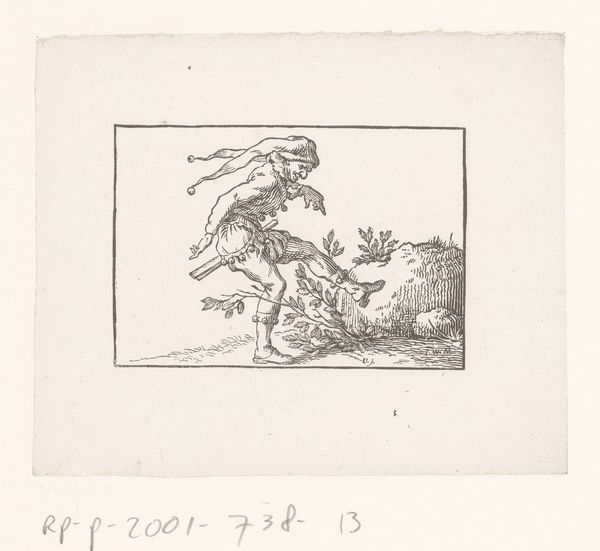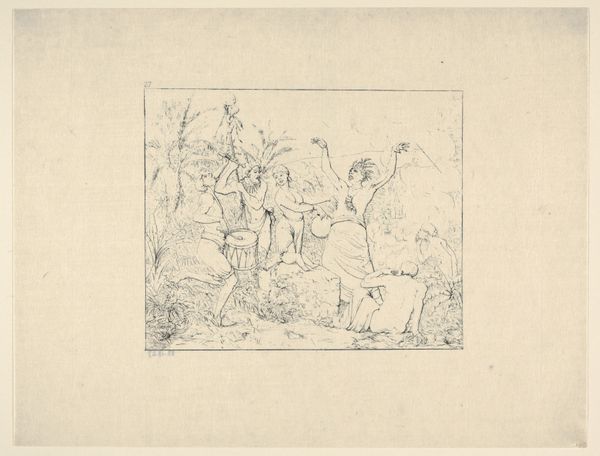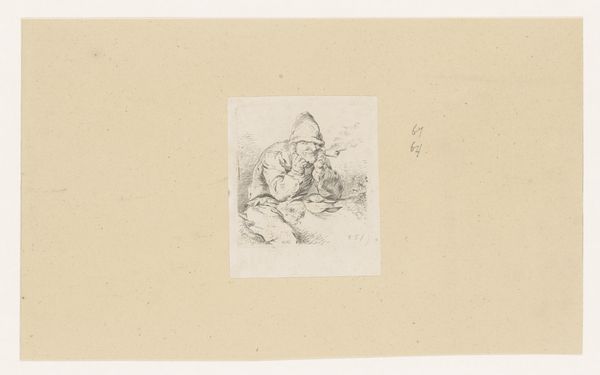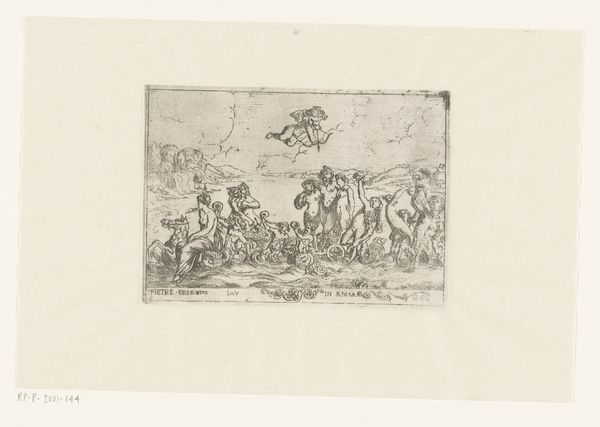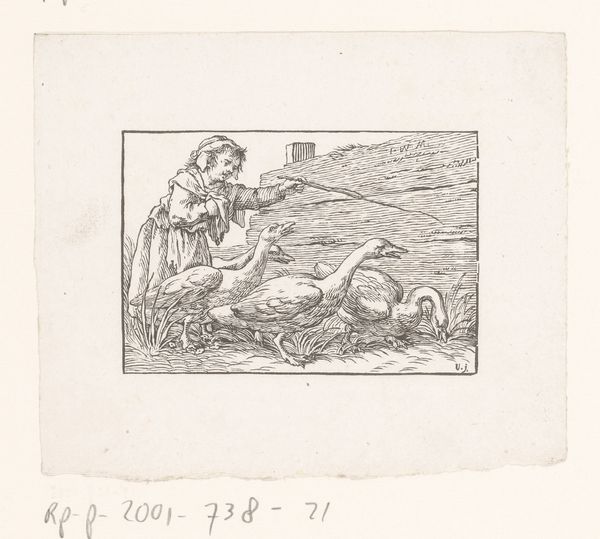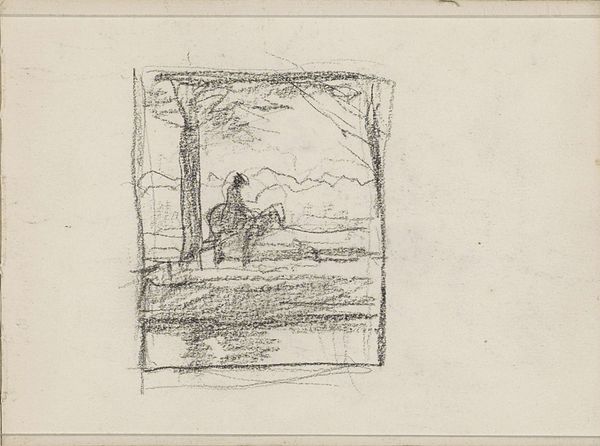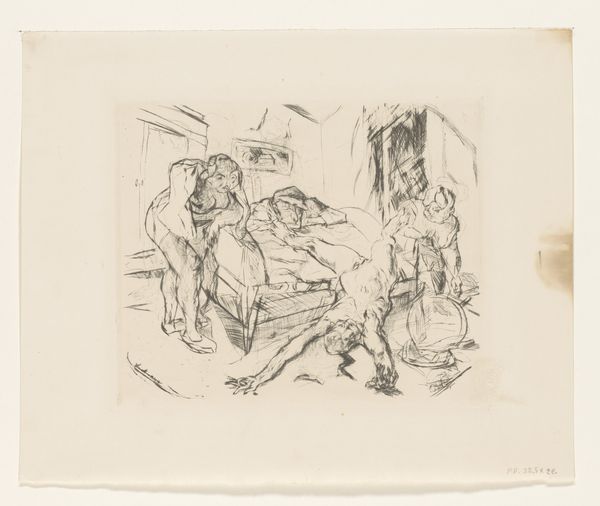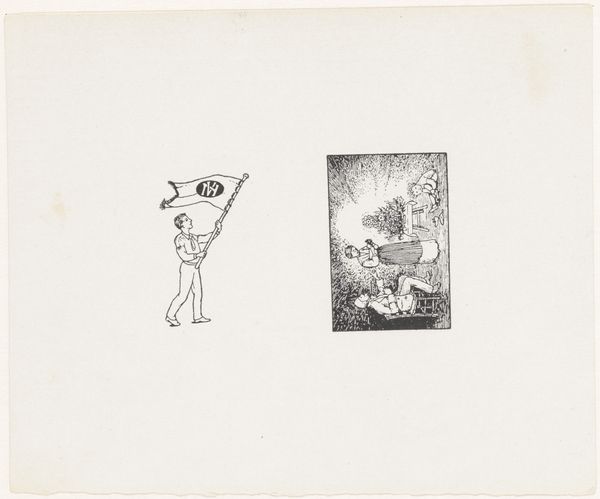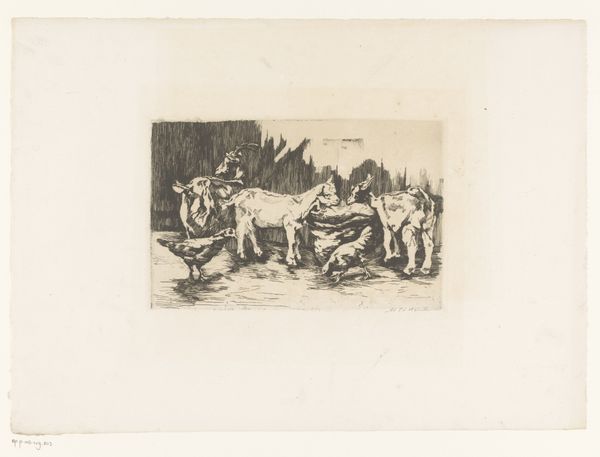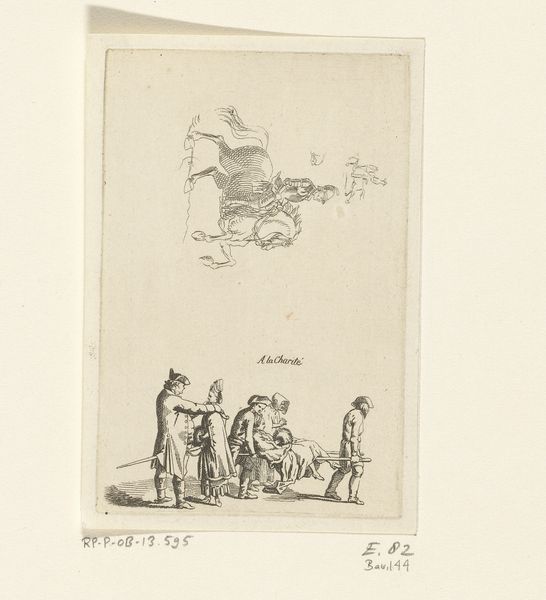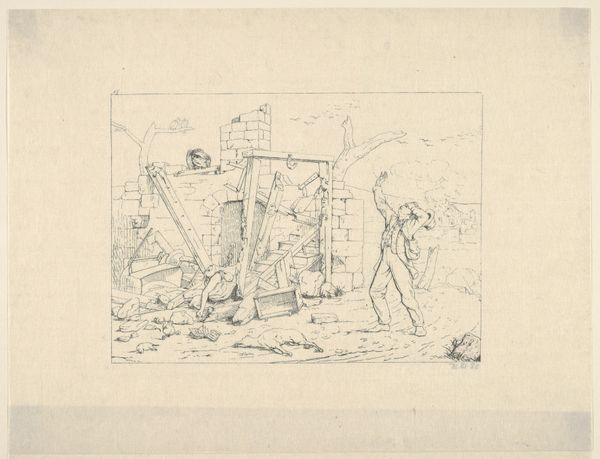
Dimensions: height 55 mm, width 80 mm
Copyright: Rijks Museum: Open Domain
Curator: Welcome. Before us is Johann Friedrich Gottlieb Unger's “Ruiter en wandelaar,” or “Horseman and Hiker,” made sometime between 1763 and 1804. This piece, held in the collection of the Rijksmuseum, presents us with a study in monochrome—a landscape sketched in pencil and engraving. Editor: Immediately, I'm struck by the economy of means here. It’s austere, almost severe. Yet, within those stark lines, there's an intriguing narrative tension. What story is being hinted at here with these seemingly routine figures? Curator: Notice how Unger employs the contrast between the figures to build this tension. The lines of the mounted figure, confident and flowing, direct us toward the sharp angles defining the figure of the hiker, a man on foot, standing with his meager pack under the harsh directive of that directional sign. Editor: Yes, and look at the contrast between materials! We have the engraver meticulously rendering social status in the figure on horseback with a sword and fine horse. Yet both men rely on roughly the same wooden sign. Is Unger reminding us of something universal here, some basic point about our reliance on a shared material reality, regardless of station? Curator: I appreciate your point about shared materials—certainly intriguing. However, the rendering itself cannot be divorced from its semiotic purpose. Unger’s clear linearity—his precise and measured application of strokes, creating depth and differentiation—underscores an allegorical intention. We are clearly presented with the division of social order: those who ride versus those who walk. Editor: I suppose I simply cannot unsee the marks of production. How was this engraving created? What kind of pencils and engraving tools were employed? How did their costs reflect accessibility for other artists? These details can reframe entirely how we think about Unger's composition here! Curator: All pertinent considerations. As our time draws to a close, let’s appreciate how Unger—whether conscious of the material conditions or deploying pure allegory—forces us to question those assumed power dynamics, both on the road and in the very act of representation itself. Editor: Indeed. Perhaps it is Unger's emphasis on labor through such deliberate marks that invites our present scrutiny.
Comments
No comments
Be the first to comment and join the conversation on the ultimate creative platform.
